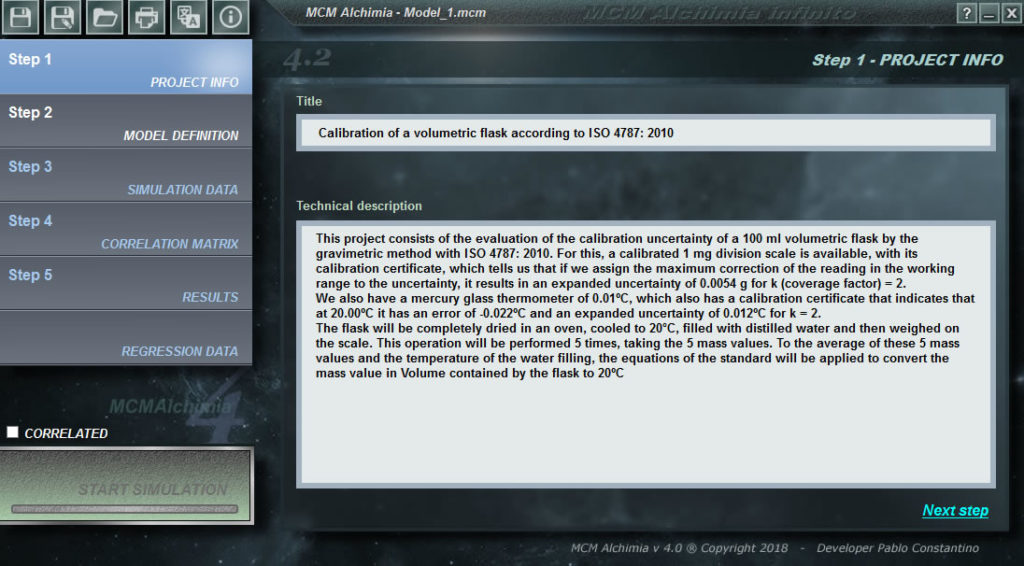Determination of the mathematical model of the trial
In this step two we will define the mathematical model of the essay. The ISO 4787 guide details two calculation methods to obtain the volume contained in a volumetric flask. The first one indicates the calculation of the volume integrating all the magnitudes participating in the model into the equation. For a test, particularly for a defined temperature, a defined building material (glass), etc. Many of these values, such as water density and coefficient of expansion, can be considered constant, so this standard also proposes a tabulated factor to simplify the calculation. In this case we will use the complete equation to study the variables and their associated uncertainty. The equation (test model) will be:

The equation editor of MCM Alchimia is an ASCII editor that does not have special characters for which the Greek letters will have to be replaced by a common variable name. The main equation that will be put in Set equations will be V20 = ((Ml-Mv) / (Dens_w-Dens_a)) * (1- (Dens_a / Dens_b)) * (1-CDT * (t-20) ) where:
V20: Volume of the flask at 20ºC.
Ml: Mass (read on the scale) of the flask flush with detilated water (g).
Mv: Mass (read on the scale) of the empty flask (g).
Dens_w: Density of the water used in the calibration (g/ml).
Dens_a: Air density (g/ml).
Dens_b: Density of the masses with which the scale has been adjusted (g/ml).
CDT: Coefficient of cubic thermal expansion of the flask material (in 1/ºC).
t: Test water temperature (ºC).
It is advisable to make a deeper analysis of the sources of uncertainty of the input quantities of the model. In this way, if any magnitude has more than one source of uncertainty, it will be broken down into a sum of as many variables as there are sources of uncertainty, one of them will take the value of the magnitude and the rest will have zero value since they are added only for the purpose of evaluation of uncertainties.
More help
- First project – Step 1
- First project – Step 2-A: Basic model
- First project – Step 2-B: Input uncertainties
- First project – Step 2-C: Final model
- First project – Step 3.
- First project – Results.


